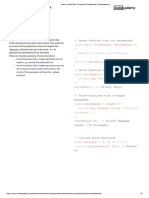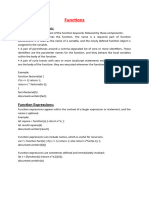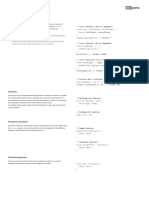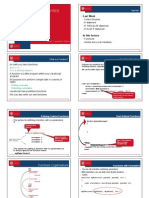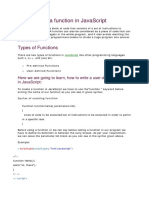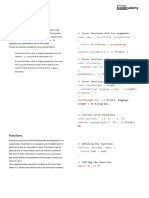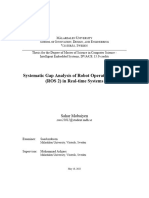0% found this document useful (0 votes)
43 views39 pages5 Function (ShreeNotes)
The document discusses functions in JavaScript. It defines a function as reusable code that can be called anywhere in a program to perform a specific task. This allows programmers to divide complex programs into smaller, manageable functions to make the code more modular and reusable. The document then covers how to declare functions with and without parameters, how to call functions by passing arguments, and how functions can return values. It provides examples of functions that add numbers, greet with a name parameter, and calculate factorials recursively. The document also discusses function scope, hoisting, and function expressions.
Uploaded by
Aniket JawadeCopyright
© © All Rights Reserved
We take content rights seriously. If you suspect this is your content, claim it here.
Available Formats
Download as PDF, TXT or read online on Scribd
0% found this document useful (0 votes)
43 views39 pages5 Function (ShreeNotes)
The document discusses functions in JavaScript. It defines a function as reusable code that can be called anywhere in a program to perform a specific task. This allows programmers to divide complex programs into smaller, manageable functions to make the code more modular and reusable. The document then covers how to declare functions with and without parameters, how to call functions by passing arguments, and how functions can return values. It provides examples of functions that add numbers, greet with a name parameter, and calculate factorials recursively. The document also discusses function scope, hoisting, and function expressions.
Uploaded by
Aniket JawadeCopyright
© © All Rights Reserved
We take content rights seriously. If you suspect this is your content, claim it here.
Available Formats
Download as PDF, TXT or read online on Scribd
/ 39



















